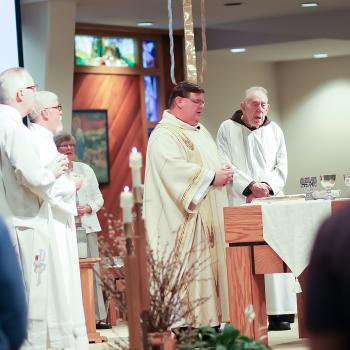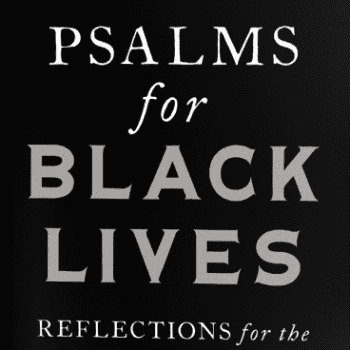The rest of the film seems to be from older son Jack O’Brien’s (Sean Penn) point of view. He is now a successful architect working in a Houston high-rise as he reflects back on his family and raises questions concerning his troubled relationship with his father. A marvelous series of images of growing up with two brothers, ruled by a harsh father and nurtured by a gentle mother. We never hear the first names of the parents. This is in keeping with Jack’s point of view—no child in the 1950s would have called parents by their first names.
Mrs. O’Brien says that there are “two ways through life: the way of nature, and the way of grace.” The father embraces the way of nature, or what the apostle Paul would call the way of law. In one scene Father takes little Jack to the edge of their property and orders him to see the line where their neighbor’s yard begins. He is not to cross it. Mr. O’Brien often berates Jack for his shoddy yard work, and when another son resists him at the table, Mr. O’Brien loses his temper and manhandles the boy, ejecting him from the room. Mrs. O’Brien and Jack look on in disapproval. In another scene Mr. O’Brien struggles with Jack himself. Jack’s resentment turns into a hatred that causes him to wish his father to die—and in the scene in which he comes upon his father working beneath the family car, we fear that he will give in to the clear temptation to kick over the jack holding up the car.
Mrs. O’Brien is grace embodied, quickly forgiving the boys’ peccadilloes (Jack and some friends throw rocks through the window of a vacant house). She plays with the boys and often dances around the house or yard with them. She is a wonderful incarnation of verse 7 of the passage from Job, “when the morning stars sang together and all the heavenly beings shouted for joy.” We hear her tell her sons, “That’s where God lives,” as the camera pans up to the sky.
The family is devoutly Christian, attending church and saying grace at family meals. At one point we hear a portion of their priest’s sermon in which he is preaching on Job and reminding the congregation, “misfortune befalls the good as well.” Mr. O’Brien plays the church organ as young Jack looks on. Apparently the father’s great regret is that he failed to pursue his passion for music professionally, settling instead for a secure job at the local power plant. Harsh as he is at times, Mr. O’Brien deeply loves Jack and his brothers, embracing them often, and when Jack is retiring for the night, asking him for a kiss.
Dozens of other scenes evoke the tenderness, wonder, and joy of family life—shots of an infant Jack putting his ear up to his mother’s swollen belly to hear movements of one of his brothers. Mr. O’Brien holding the tiny foot of a new born son in his man’s hand. The baptism. The brothers crawling, learning to walk, looking at the wonders of nature—in a shot that Malick had not planned, Mother watches joyfully as a butterfly lands on her out-stretched hand. Chasing after bubbles floating across their lawn. Planting a tree. Mother tucking in the boys at night and looking in on them. The boys learning about death and injury through the drowning of a boy at the swimming pool and the burning of another lad’s hair in a house fire. Running through fields, climbing trees—all the mundane things we take for granted, Mr. Malick prods us to regard with a renewed sense of wonder, joy, and thanksgiving.
There is more, much more, to be said about this great film in which cinematographer Emmanuel Lubezki, guided by the director and enhanced by the work of no-less than five editors, reveals so much beauty, of both of nature and that of the human spirit. The latter is fallen, as many scenes show, but it is capable of redemption–later Mr. O’Brien seeks Jack’s forgiveness as he realizes that he had chosen the wrong approach to life. Earlier Jack himself had experienced forgiveness and reconciliation after he had deliberately shot one of his brothers with his BB gun.
The film’s climax is a cinematic version of a cosmic reconciliation, some regarding it as an apocalyptic version of heaven. Whether or not Mr. Malick ‘s beliefs conform to orthodox Christianity, he is clearly fascinated with the big questions of life, death, faith, and reconciliation. By setting his loose story of the O’Brien family amidst the splendors of the history of the universe he has given us a film that will resonate within the hart and soul of those in the audience willing to open up to his unusual approach to filmmaking. Not everyone will be able to do so. Following the private screening I attended, one reviewer went into a rant about how terribly chaotic and incomprehensible the film was, a reaction that many others will also feel. However, for those with “eyes that see and ears that hear,” and are willing to work hard to do so, this will be a film to treasure and return to time after time. Because it is a difficult film I strongly urge you to see it in company with one or more friends so that afterwards you can help each other “to see.”












